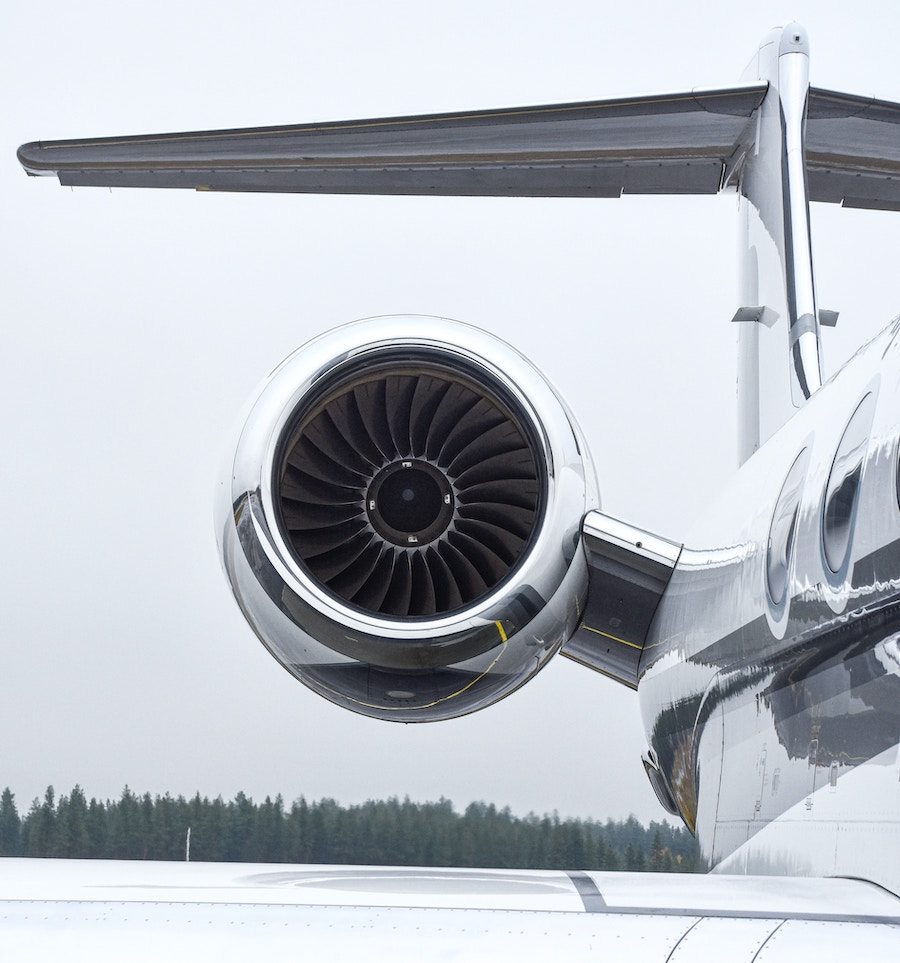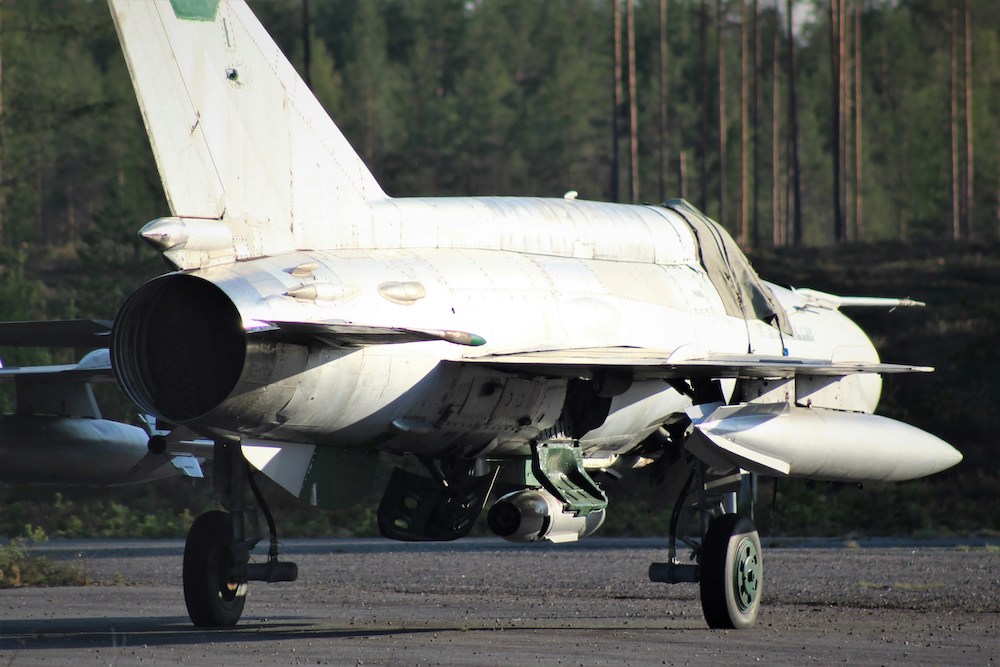
Aviation is an industry that consistently pushes the boundaries, refusing to settle for the status quo. This truth resonates across all facets, spanning from part procurement to pioneering aircraft innovations. In celebration of the relentless inventive spirit driving the aerospace industry to new frontiers, we have chosen to spotlight the new jet engine technology that we believe will redefine the future.
Sustainable Aviation Movement – A Major Driving Force
Transportation produces the most emissions in the United States (U.S.), with aviation being one of the most challenging industries to decarbonize. Therefore, as climate change and emissions continue to drive policy change around the world, U.S. regulators and aviation industry members have joined forces to implement the U.S. Aviation Climate Action Plan.
The U.S. Aviation Climate Action Plan is set to achieve net-zero greenhouse gas emissions from the U.S. aviation sector by 2050. To achieve this ambitious goal, U.S. regulators and aviation industry members have come together and mutually committed to several objectives, one of which is the development of next-generation, fuel-efficient engine technologies.
General Operation of a Jet Engine
To best explain the emerging jet engine technologies, it may be beneficial to first review how a turbofan jet engine works. This type of engine design is what most single-aisle commercial aircraft use today; it is also the most efficient. A turbofan engine is a type of jet engine that uses a ducted fan to generate thrust and move the aircraft forward (see Figure 1). The engine has four (4) major components, including a fan, compressor, combustor, and exhaust, and works in the following way:
- Suck. Air is drawn into the engine through the fan.
- Squeeze. The air is compressed by low-pressure and high-pressure compressor blades.
- Bang. The compressed air is mixed with fuel and ignited in the combustion chamber.
- Blow. The hot gases expand and exit the engine through the turbine and the nozzle.
New and Exciting Jet Engine Technology
Although the turbofan jet engine is already extremely efficient, with climate change gathering increased policy and regulatory attention and generating consumer activism, the aviation industry must maintain its momentum in cutting the environmental impact of its operations. As a result, radical changes must be proposed, and innovative technologies developed. Examples of new jet engine technologies currently being explored include:
- Open fan concept
- Smaller engine core
- Electrified aircraft propulsion
- Sustainable aviation fuels
Let us explore each concept in more detail and see how these emerging new technologies are sure to revolutionize the next generation of jet engines while reducing their environmental footprint.
Open Fan Concept
A radical new engine design with an open fan concept is a prime candidate to power the next generation of aircraft (see Figure 2). Following the success of the CFM LEAP engine (see Figure 3) powering aircraft such as the A320neo and B737 MAX, both Airbus and Boeing are set to assist GE Aviation and Safran with the testing of the new CFM RISE engine (see Figure 4) design.
The CFM RISE engine has the potential to lower CO2 emissions by more than 20%. The open fan design in conjunction with advanced materials, 100% sustainable aviation fuel usage, and hybrid-electric design, is set to be the biggest leap in engine efficiency in decades and is set to reshape the future of aviation.
The larger fan blades on the engine will increase the airflow, while the fixed vanes behind it will help to guide and smooth the air stream. Although the engine core will remain similar between the two designs (i.e., compressors, combustors, turbines, after-burners, and thrust reversers), its components will be made with lighter materials and additive manufacturing parts. Finally, the CFM RISE engine will not have a nacelle (i.e., pod that surrounds the engine core and the air-intake fan) to allow for greater airflow toward the rear of the engine, creating stronger thrust.
Smaller Engine Core
To accomplish the goal of making commercial flight sustainable, efficient, and cleaner, the National Aeronautics and Space Administration (NASA) has established the Sustainable Flight National Partnership to bring advanced, high-risk, high-reward technologies to market to help combat climate change, reduce costs, and promote U.S. leadership in aviation.
NASA is working to develop highly efficient engines for future single-aisle commercial aircraft under its Hybrid Thermally Efficient Core (HyTEC) project at NASA’s Glenn Research Center. In partnership with GE Aviation and Pratt & Whitney, NASA is aggressively pursuing next-generation aircraft engines that use less fuel and produce more power, by increasing the bypass ratio of the engine. This means (see Figure 5):
- Making the fan on the front of the engine bigger, thereby increasing airflow
- Shrinking the engine’s core, thereby reducing fuel consumption
Under these contracts, GE Aviation and Pratt & Whitney are helping NASA address specific technical challenges associated with reducing engine core size, including:
- Developing casing treatments and advanced designs with smaller parts and tighter clearances to enable small core compressors that maintain operability while optimizing performance and efficiency.
- Enabling more efficient turbine operation by developing advanced blade and cooling designs and aerodynamic features.
- Developing ceramic matrix composite (CMC) liners for combustors to increase performance and durability.
- Developing CMCs and environmental barrier coatings (EBCs) for turbine blades and vanes to increase the temperatures and efficiency of turbines.
Evolving and shrinking an aircraft engine’s core is expected to reduce fuel burn by 5-10%, creating a parallel reduction in emissions. These smaller engine cores are also expected to produce about two to four times more power to be extracted from the engine (i.e., up to 20% power extraction), which is extremely important because future hybrid- and- turbo-electric aircraft will require tremendous amounts of power.
Electrified Aircraft Propulsion
The electrification of aircraft propulsion systems can also help significantly reduce harmful emissions in the atmosphere and improve aircraft performance. NASA and its industry partners (i.e., GE Aviation and MagniX USA Inc) are exploring several different electrical propulsion architectures for electrified aircraft concepts, including the following system configurations (see Figure 6):
- All-electric, which uses batteries as the only source of propulsion power.
- Hybrid electric (i.e., parallel hybrid, series hybrid, series/parallel partial hybrid), uses gas turbine engines for propulsion and to charge batteries that also provide energy for propulsion during flight.
- Turboelectric (i.e., partially, fully), does not use batteries for propulsion energy during flight, but rather relies on gas turbines to drive electric generators which power inverters and individual direct current motors that drive individual distributed electric fans.
Sustainable Aviation Fuels
Jet fuel is a critical component of the safe, dependable, and efficient operation of today’s jet engines. Refining crude oil into petroleum jet fuel is a mature, cost-effective industrial process with low production costs. While jet fuel’s properties play a key role in enabling today’s jet engine operations, they also make it a difficult sector to decarbonize because they are hard to replace.
Sustainable aviation fuels (SAF) are drop-in liquid hydrocarbon fuels with the same performance and safety as conventional jet fuels produced from petroleum. They can fully replace the existing fuel supply and can be used in the same infrastructure, engines, and aircraft. SAF can be created from either renewable or waste materials and can reduce emissions by at least 50% relative to conventional jet fuel. Since SAF is drop-in compatible with the existing fleet, the fuels are hydrocarbon and thus emit CO2 when combusted in the aircraft engine. The extent to which any SAF provides a climate benefit depends on the SAF’s life cycle emissions profile, considering the production, transportation, and combustion of the SAF, as well as the indirect effects associated with these. Finally, some types of SAF reduce emissions that impact air quality and contribute to the formation of contrails, which also impact climate change.
While there is a great deal of interest in using SAF, SAF production and availability is limited today. High conversion costs and limited feedstock and production infrastructure have inhibited SAF expansion. Expanding SAF availability and maximizing SAF’s benefits requires addressing key challenges and risks across the supply chain. Therefore, the development and deployment of SAF is a key aviation climate priority for U.S. regulators and aviation industry members. As a result, the U.S. government has established a multi-agency SAF effort in research, development, demonstration, deployment, commercialization support, and policy to:
- Reduce the cost of SAF
- Enhance the sustainability of SAF
- Expand SAF supply and end-use
Summarizing Our Thoughts On New Jet Engine Technologies
As climate change and emissions continue to influence the next generation of jet engines, new technologies such as the open fan concept, smaller engine core, electrified aircraft propulsion, and sustainable aviation fuel are sure to revolutionize the industry and help achieve net-zero greenhouse gas emissions from the U.S. aviation sector by 2050. Because today’s turbofan jet engines are already extremely efficient, radical changes must be proposed, innovative technologies developed, and momentum maintained by U.S. regulators and aviation industry members to meet the ambitious goal of significantly cutting the environmental impact of aviation operations across the world.
For more insights into developments shaping the aviation world, read:
- Aerospace Supply Chain Challenges and Potential Solutions – 2024 Predictions
- AI in Aviation: The Future of Buying & Selling Parts
- Aviation Risk Management Strategies for 2024
- Leveraging Big Data Analytics in Aviation Industry Operations & Parts Management
By Katarzyna Szwed-Carlson
Kasia Szwed-Carlson is an expert in the aviation industry with 15 years of experience working in flight operations management and training leadership roles.



